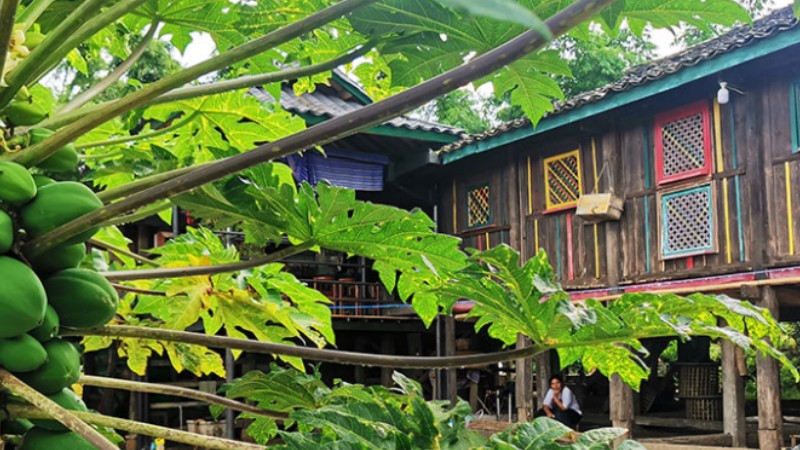Bamboo as an important, versatile tool in green drive
NANNING, Nov. 28 (Xinhua) -- Bamboo, a cultural symbol for the Chinese people since ancient times, has today become an important tool in China's efforts to go green.
Bamboo-based products such as lunchboxes, bookmarks, computer mice and keyboards grabbed the limelight at the First World Forestry Industry Conference held last week in Nanning, capital of south China's Guangxi Zhuang Autonomous Region.
"Painted the sunniest yellow, the canopy of Madrid-Barajas Airport is one of our proud creations," said Wang Limei with Zhejiang Daocheng Bamboo Industry Co., Ltd. "It's made entirely of wavy bamboo ceiling strips with built-in skylights and finished to the highest fire-retardant standard."
"For the 30 years since the company started operating, it has been dedicated to expanding the use of bamboo from interior to exterior settings, challenging the stereotypes that have regularly attached to this particular material," said Wang.
As an environmentally-friendly material that can be turned into a wide range of products, bamboo has enjoyed growing popularity among carbon-conscious businesses and consumers, according to Liu Xianmiao, an official from the International Center for Bamboo and Rattan.
"This is made entirely of bamboo," said Liu as he pointed to a green cylindrical structure that stood about three meters tall in the middle of an exhibition hall. "Bamboo plays an increasingly prominent role in our daily lives, and its application is also getting broader."
With abundant bamboo resources, China was among the first to grow and exploit a plant known for its malleable nature. Bamboo has been increasingly in demand as a green alternative to throw-away plastic in China. The country now has over 10,000 companies that specialize in bamboo processing.
The production value of the bamboo industry showed a five-fold increase from 82 billion yuan (about 11.47 billion U.S. dollars) in 2010 to 415.3 billion yuan in 2022, according to official figures.
In recent years, scientific institutes in China have made steady technological progress, helping eco-friendly bamboo secure a solid foothold in the mainstream market. Chinese businesses have been using newly-available technology to diversify applications and promote a great variety of biodegradable products overseas.
"It's fair to say that the entire life cycle of the plant is constantly absorbing carbon dioxide," said Wang, adding that as a green, low-carbon, biodegradable natural material, bamboo can be utilized from leaf to root for multiple purposes, while it is also considered a potential source of clean energy.
Boasting a forest coverage rate of 24.02 percent and some 6.67 million hectares of bamboo forest, China is endowed with favorable conditions to grow this particular type of plant, which consists of various subspecies, and is therefore accurately dubbed as the "kingdom of bamboo."
In early November, China initiated a three-year action plan to tackle climate change and curb pollution through replacing plastic products with bamboo alternatives. According to this plan, bamboo items used as replacements for plastics will see further improvement in their quality, variety, scale and profitability by 2025.
By then, the added value of bamboo items will increase by 20 percent compared with the 2022 level, while the utilization rate of bamboo materials will rise by 20 percentage points.
Photos
Related Stories
- SW China's Sichuan promotes bamboo-related industries
- China promotes bamboo as eco-friendly substitute for plastics
- Jingxi village: Invaluable assets in lush bamboo
- Turning millennia-old bamboo slips into decipherable clues
- Use of bamboo promoted as sustainable alternative
- Bamboo shoot competition held in Liucheng, S China's Guangxi
Copyright © 2023 People's Daily Online. All Rights Reserved.









